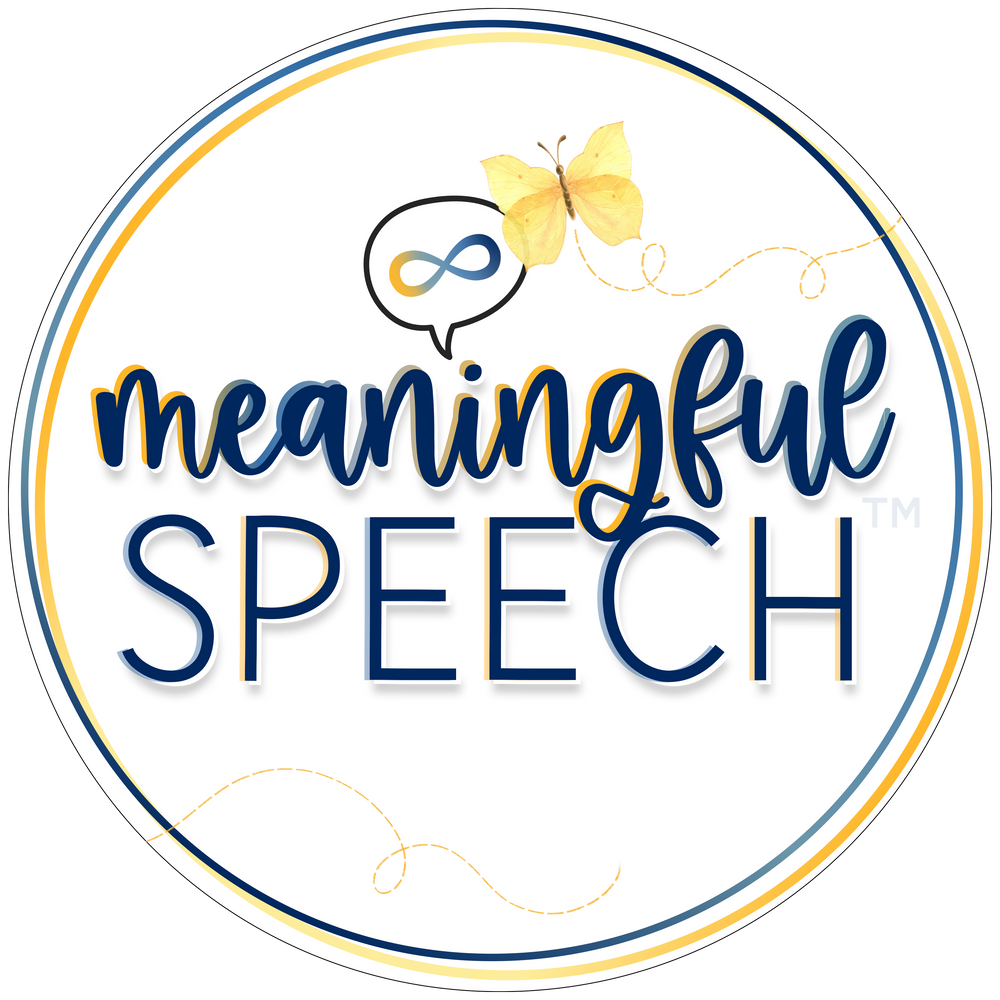What to do if you suspect a child is a gestalt language processor
Nov 09, 2022
So you suspect or have identified a child as a gestalt language processor and now you’re wondering what to do next. We have some tips for parents and professionals to help you support your child/client’s language development.
Tips for parents and professionals
- Don’t attempt to eliminate or extinguish gestalts (scripts). First and foremost, gestalt language processing is natural language development. Although the meaning of a child’s scripts may not be apparent to you or others at first, they are meaningful! We support language development through interactions, and a positive relationship with the child. We want to send a message to the child that their communication is meaningful and valid to us. We want them to trust us as communication partners. Having rapport is so important when it comes to supporting a child’s language development.
- Always acknowledge scripts and accept them as communication. You can acknowledge a script in a number of ways. Whether you know the meaning or not. You can smile, nod your head, repeat the script back to them, say “yeah!”, etc. Let them know that their communication is heard, even if you’re not quite sure of the meaning yet.
Example:
Child: “Elmo's fur is furry, alright”
Adult: *nods* “Yeah! Elmo’s fur is furry, alright!” - Do the detective work. Try and figure out what the script means. Once you think you know what it means, model what you *think* they’re trying to say. You may not get it right at first, keep at it! They’ll let you know if you’re right.
Example:
Child: “Hot soup!”
Adult: “I’m hungry mom!”
The child isn’t requesting hot soup in this situation. After some detective work, the adult discovers that the child says this when they’re hungry. Therefore, they model “I’m hungry!” for the child.
- Eliminate the questioning. We often ask children questions as a way to connect with them. Most gestalt language processors cannot reliably answer questions until they’re self-generating language (Stages 3-4+), so frequent questioning can become frustrating on both sides. Instead, try commenting, narrating and pausing.
Instead of…
*sees a cat run by*
Adult: “Johnny, what is that running by?”
Child: *no response*
*The child isn’t left with a mitigable (easy to mix and match) model to use in the future when they see a cat, they will likely repeat the question asked*
Try…
Adult: “Look! It’s a cat!”
*The child has a mitigable model that they can use in the future when they see a cat* - Do not take all scripts literally. Most gestalts aren’t going to be literal. Instead, think past the words.Ask yourself questions to dig deeper into the meaning. Children pick up scripts due to a dramatic or emotional experience when they heard it. Gestalt language processors are drawn to high emotion and intonation. If you’re unfamiliar with their language history, ask caregivers, or those who are frequently with the child.
Example questions to ask yourself:
What media is the child frequently exposed to? What is their body language telling you? Do they always say this script during certain times of the day? Does their intonation sound familiar? Etc. *This is not an exhaustive list* - Follow the child’s lead. Play with what they want to play and model language naturally during play. If it doesn’t feel natural, hold off. The most important thing when modeling language with gestalt language processors is that modeling should occur in natural opportunities.
Example: Before a child comes in for their first session, you ask their caregivers about their interests. Their parents tell you they enjoy movement activities and tactile play. You decide to set up an obstacle course, put up a sensory swing and put out a sensory bin filled with beans. When the child comes in for the session, you let them choose which activity they want to do and follow their lead. As natural opportunities arise, you model gestalts for the child.
*Child jumps in the swing* This is a great natural opportunity to model language!
Adult models: “Time to swing!” - Find a speech-language pathologist who "gets it". If you're a parent and suspect your child is a gestalt language processor, find a speech-language pathologist who is knowledgable about gestalt language processing and Natural Language Acquisition to help support you and your child. They will be able to identify if your child is a gestalt language processor, help you identify where they may be in the stages and provide you with strategies to support your child through the stages of gestalt language development and get to original, flexible self-generated language.
Interested in learning more about how you can support gestalt language processors? You’re in the right place!
- There are many free podcasts, webinars and articles to get you started. A comprehensive list of resources can also be found on our website and also on Communication Development Center's website.
- Consider taking the Meaningful Speech course to learn more about how your child or client processes language, how you can support them from echolalia to self-generated (original flexible) language, child-led therapy, and neurodiversity-affirming practices.
- Consider taking our new AAC + Gestalt Language Processing course. It will teach you how to identify, evaluate and support gestalt language processors who use AAC or who you think might benefit from AAC.
- Look for a speech-language pathologist (SLP) who "gets it" and can help you in supporting your child's language development. Check out our registry. for SLPs who understand gestalt language processing and child-led therapy.
